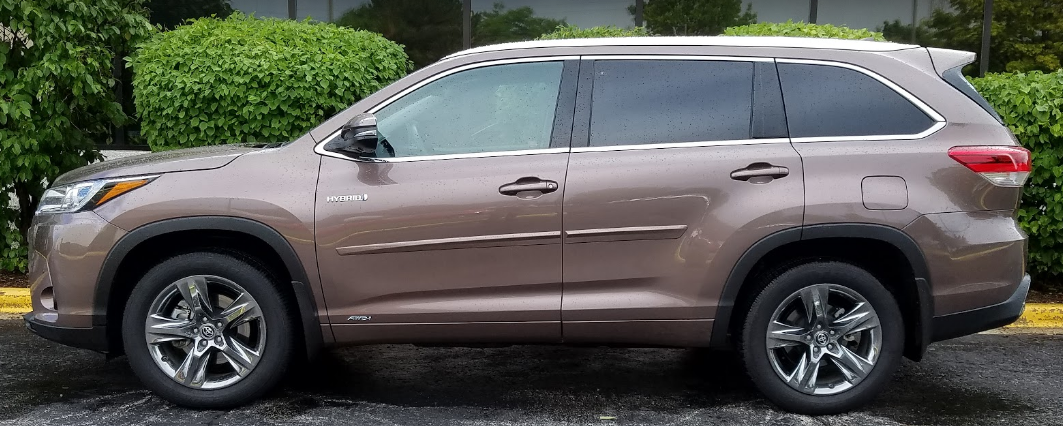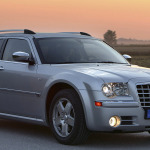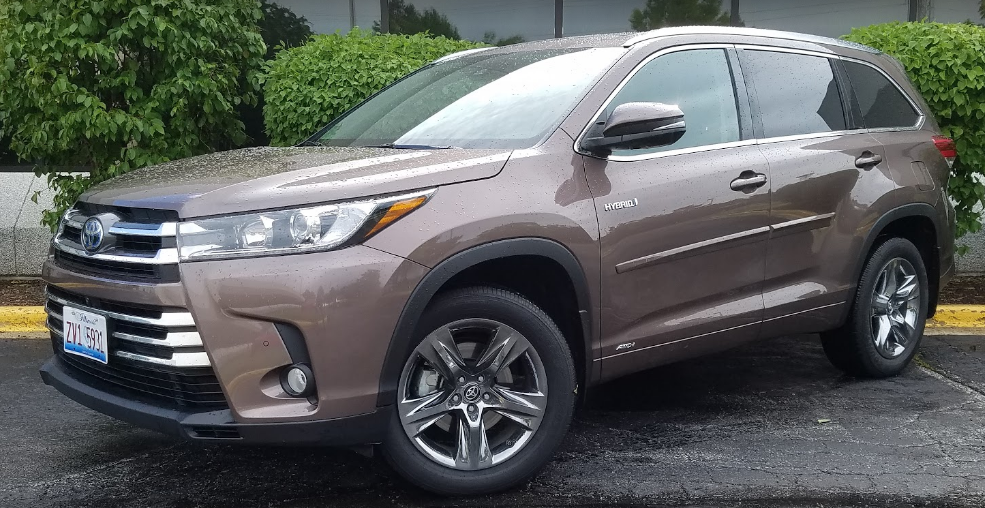
 2017 Toyota Highlander Hybrid Limited Platinum
2017 Toyota Highlander Hybrid Limited Platinum
Class: Midsize Crossover
Miles driven: 1246
Fuel used: 44.4 gallons
Real-world fuel economy: 28.1 mpg
Driving mix: 20% city, 80% highway
| CG Report Card | |
|---|---|
| Room and Comfort | A |
| Power and Performance | B |
| Fit and Finish | B |
| Fuel Economy | A+ |
| Value | B |
| Report-card grades are derived from a consensus of test-driver evaluations. All grades are versus other vehicles in the same class. Value grade is for specific trim level evaluated, and may not reflect Consumer Guide's impressions of the entire model lineup. | |
| Big & Tall Comfort | |
| Big Guy | A |
| Tall Guy | A |
| Big & Tall comfort ratings are for front seats only. "Big" rating based on male tester weighing approximately 350 pounds, "Tall" rating based on 6'6"-tall male tester. | |
EPA-estimated fuel economy: 29/27/28 (city, highway, combined)
Base price: $47,880 (not including $940 destination charge)
Options on test vehicle: Body side molding ($209), carpeted floor mats and cargo mat ($225)
Price as tested: $49,254
Quick Hits
The great: Fuel economy, interior storage, standard and available features
The good: Driving dynamics, separate-opening back window
The not so good: Long reach to some controls
More Toyota Highlander price and availability information
CG Says:
As evidenced by it earning Consumer Guide’s® Best Buy rating among midsize crossovers (though it shares the honor with two other contenders), Toyota’s Highlander is a great vehicle in any form. Roomy, capable, and with loads of handy interior storage and available 8-passenger seating, it checks off about every box on most buyers’ wish lists. (You can read our full report of a 2017 Highlander Limited AWD here.)
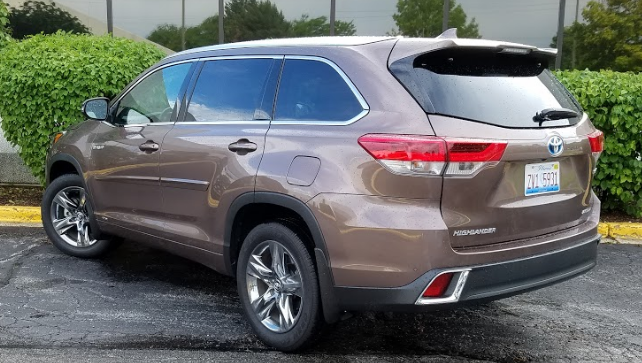
But it also offers something else — something that’s probably not really expected in the class — and that “something” is good fuel economy … at least if you fork out a little extra for one of the Hybrid versions. Hybrids come with a 3.5-liter V6 engine and electric motors both front and rear that produce a combined 306 horsepower, 11 more than the V6 in gas-engine versions. All Hybrids come standard with AWD.
Test Drive: 2016 Honda Pilot Elite
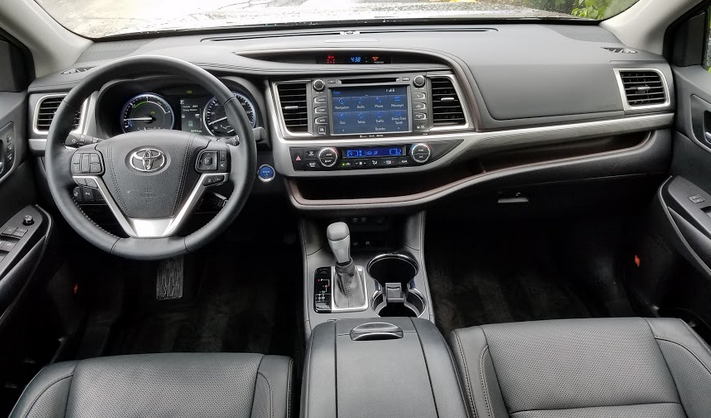
The Hybrid is offered in four trim levels: LE, XLE, Limited, and the top-line Limited Platinum tested here. In the top two trim levels, the cost of moving to the Hybrid from the conventional gas version (both of which also come standard with V6 and AWD) is $1620; it’s a little more in the lower two trim levels, even after they’ve been optioned with the V6 (the LE comes standard with a 4-cylinder engine), and AWD (LE and XLE both come standard with front-wheel drive).
Test Drive: 2017 Hyundai Limited Ultimate AWD
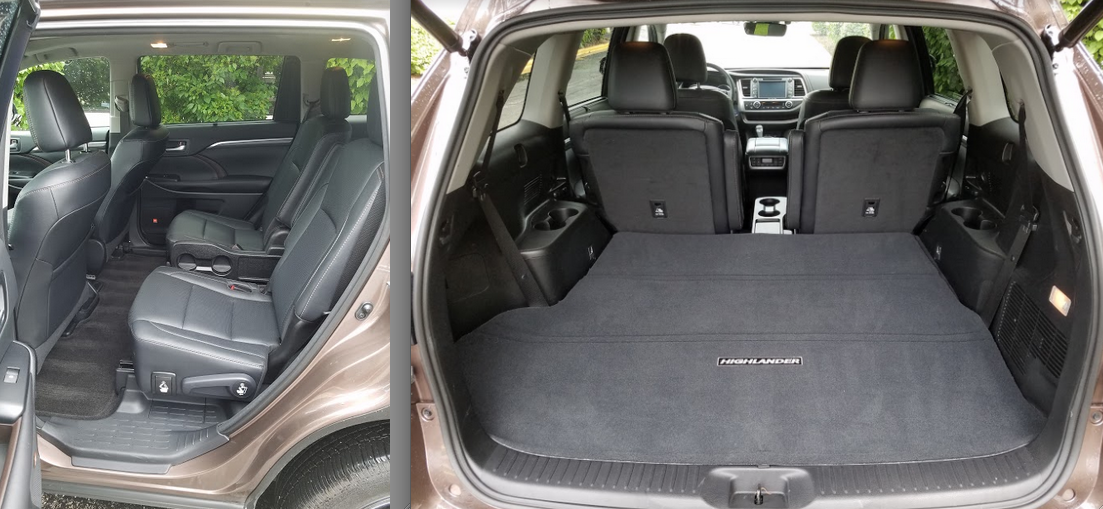
Unique to the Limited Platinum are front obstacle detection (to join rear obstacle detection, which is also standard on the Limited), heated steering wheel, heated rear seats, panoramic sunroof (rather than a smaller “regular” one), 360-degree camera (which we found to work exceptionally well), and dark-chrome wheels. Note that only the LE and XLE offer 8-passenger seating (Limited and Limited Platinum are “limited” to seven), and only the Limited and XLE offer a rear-seat entertainment system.
Test Drive: 2016 Mazda CX-9 Signature
But what about fuel economy?
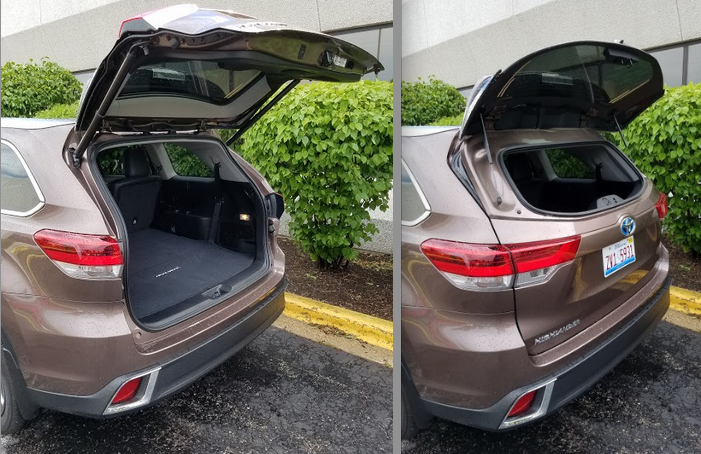
The Hybrid Limited Platinum tested is EPA rated at 29 city/27 highway/28 combined. (Like most hybrids — and unlike most gas cars — city fuel economy is better than highway fuel economy.) In our 1246-mile test, we averaged 28.1 mpg in 80 percent highway driving (which, as mentioned, is less efficient than city driving), slightly beating the official “combined” rating. By contrast, we averaged 22.8 in a gas-engined Limited AWD in 65 percent highway driving. Based on those figures, if you drive 12,000 miles per year on $2.50/gallon gas, it would take about 6.5 years to pay back the Hybrid’s $1620 cost premium, after which you’d save almost $250 a year on fuel — a pretty good deal in our view.
